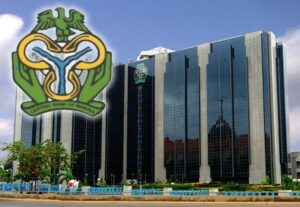Naira Trades at N1008/$ in P2P market
The Nigerian naira was trading at N1008/$ in the peer-to-peer market on Monday as traders assessed the forex market situation amidst the ongoing crisis in the Middle East.
This comes after the naira closed at N770.41/$ on Friday in the official market.
Fitch Ratings has expressed concerns about the widening gap between the official and parallel exchange rates, suggesting that Nigeria lacks the ability to stabilise its currency and that further depreciation may occur.
The recent clashes between Israeli forces and Hamas gunmen have heightened tensions in financial markets, leading to a decrease in risk appetite.
Over the past two days, the death toll in the Middle East conflict has surpassed 1,100, with thousands more injured on both sides. Palestinian militant groups claim to be holding over 130 prisoners on the Israeli side.
There were concerns about the possibility of Israel launching a ground attack on Gaza, which historically has resulted in significant casualties.
US Secretary of Defense Lloyd Austin has ordered the Ford Carrier Strike Group to the Eastern Mediterranean to stand ready to support Israel, to help prevent any regional expansion of the conflict.
The dollar index rose 0.2 per cent to 106.21, getting further support from data on Friday that showed U.S. jobs rose by the most in eight months in September, paving the way for higher-than-expected inflation.
The monthly chart suggests there is room for a push further north towards the 109.3 resistance level, following a rebound from 99.7 support in July.
On the upside, the daily chart highlights a technical point towards resistance at 107.6, with support nearby at 105.76, which should probably be watched closely this week.
Market prices suggest there is an 82 percent chance the Federal Reserve will leave interest rates unchanged at its November policy meeting.
Federal Reserve Governor Michelle Bowman reiterated her view Saturday that inflation continues to be too high despite “significant” progress in reducing inflation and the U.S. central bank Ky may need to tighten monetary policy further.
“I think it would probably be appropriate for (the Fed) to raise interest rates further and keep them restrained for a while to get inflation back to our 2% target promptly,” Bowman said.
“We should continue to be prepared to increase the federal funds rate at the next meeting if data suggests inflation isn’t progressing at a 2% rate,” she said.
Monetary policy divergence remains beneficial for the US dollar. Risk aversion will also boost demand for the US dollar.
However, FOMC members may narrow the gap ahead of US inflation figures on Wednesday and Thursday.



